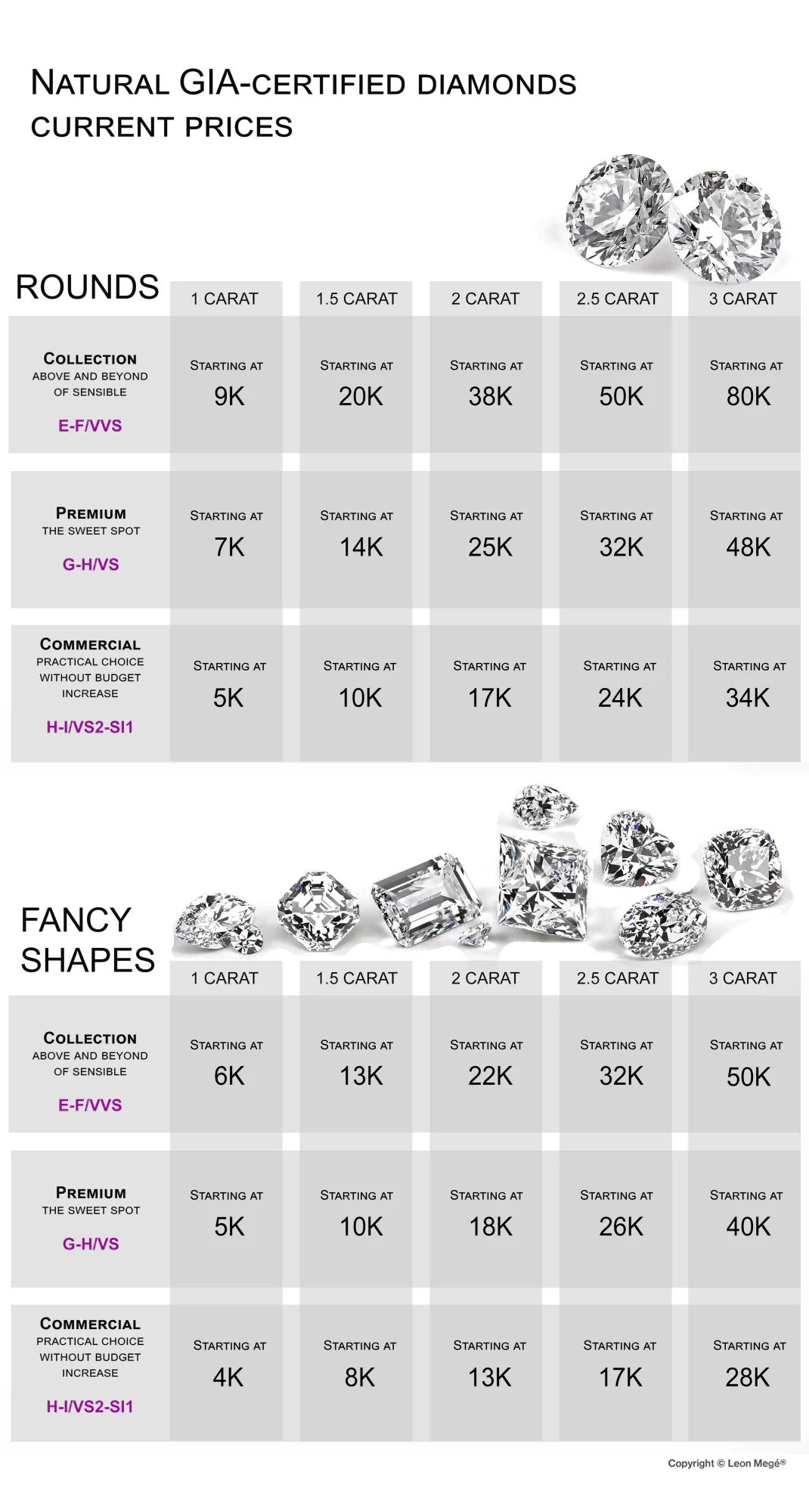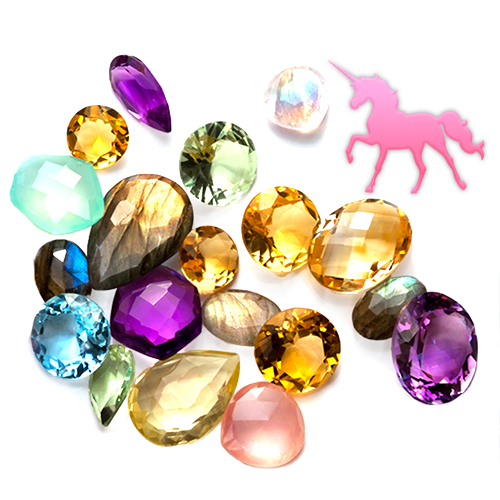
Table of Contents
Kyanite
Kyanite is a metamorphous mineral that occurs in schists and granite pegmatites. Gem-grade kyanite is extremely rare. Its name comes from the Greek word kyanos which means blue. Kyanite is an aluminum silicate that comes in various colors. Blue Kyanite is by far the most valuable variety. Kyanite is allochromatic, meaning it has color-zoning, just like some sapphires. Kyanite is relatively soft – from 4 on the Mohs scale to roughly 6 depending on the direction (perpendicular or parallel to its long axis).
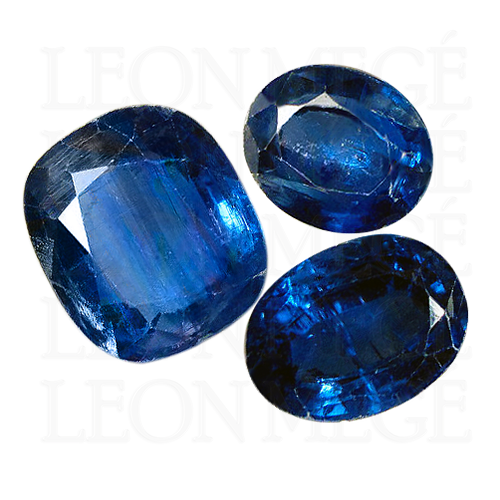
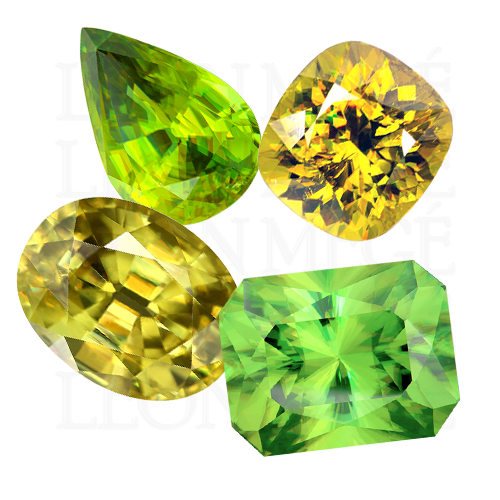
Sphene
Sphene, also known as titanite, has rich body colors, strong trichroism, and a fire that exceeds diamond. Sphene’s typical color is yellow, green, orange, and brown. Pinks, reds, black and colorless materials are scarce. Sphene is softer than most other gemstones but looks attractive in jewelry and lasts a long time if set and maintained properly. Sphene is a collector’s gem – eye-clean stones over five carats are extremely rare.
Grandidierite
Grandidierite is one of the rarest minerals on earth, first discovered in 1902 in southern Madagascar and named in honor of French explorer Alfred Grandidier.
Grandidierite crystals have been found in Malawi, Namibia, and Sri Lanka. However, gem-quality grandidierite, with rare exceptions, has been found only in Madagascar. Grandidierite rarely exceeds 3-4 carats; the gem-quality stones are mostly under one carat, often heavily included. Grandidierite has two cleavage planes making it susceptible to breaking during the cutting. It also suffers from strong trichroism, making it difficult to orient during cutting to ensure it faces blue or bluish-green.
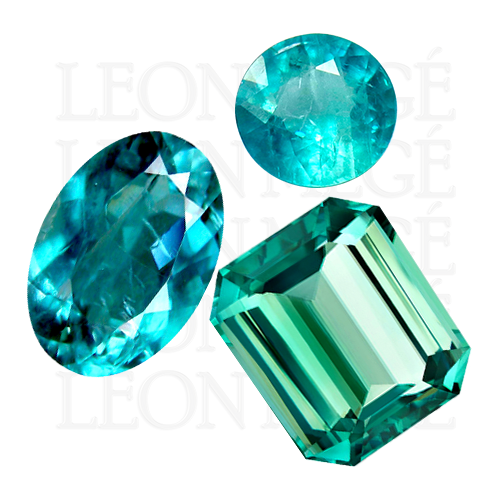
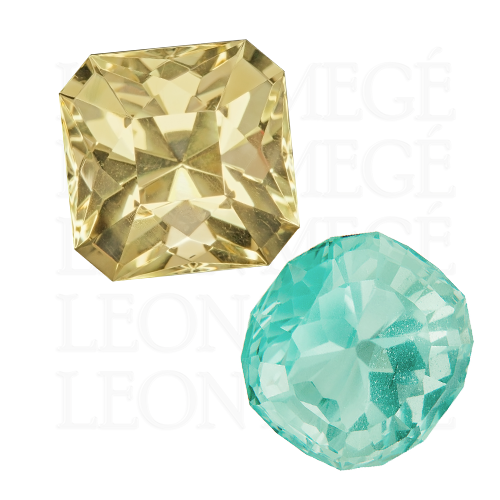
Fluorite
Fluorite formed 250 and 100 million years ago from hydrothermal solutions that filled underground fissures. Due to its softness and perfect cleavage, fluorite is a challenging gemstone to facet and polish.
Most fluorites have pale pastel shades of pink, yellow, and that special hue we call “a newborn surprise.” However, occasional specimens can rival the deep purple color of amethyst. Braldu fluorite is another variety with an unusual bright apple-green color. Fluorite can also display distinctive bi-color and multi-color zoning. The ‘Blue John’ variety, with curved bands of blue, purple, yellow, and white was used in England to carve ornaments since Roman times.
Sunstone
Sunstone comes in various warm shades ranging from colorless to yellow, orange, brown, pink, red, green, blue-green, and even multicolor. Sunstone’s glistening appearance from certain directions is called schiller from the Old German word scilihen, which means to wink or blink. The abundance and size of copper platelets within the gemstone determine the color. In the US, there is plenty of sunstone in Oregon. However, it also has been found in Southern Norway, Sweden, and South Australia.
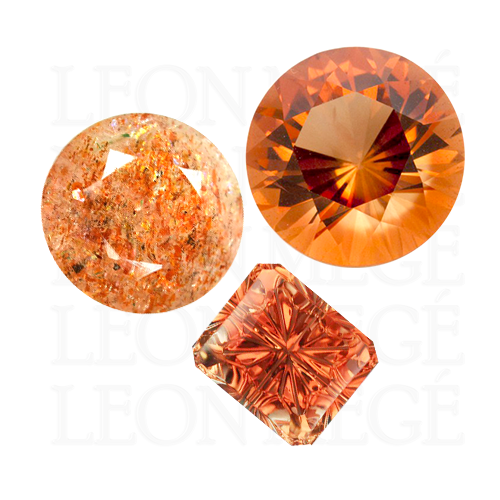
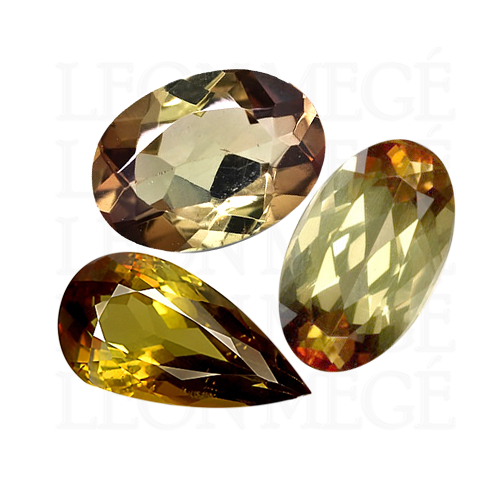
Andalusite is a cute brown-green gemstone first discovered in Andalusia, Southern Spain. It is strongly pleochroic; its color is directional and depends on the direction of view. Andalusite is polymorphous with kyanite and sillimanite, meaning they share chemistry but not a crystal structure.
Iolite
Iolite’s name comes from the Greek ios meaning violet but shows different colors depending on the direction it is observed – a property called pleochroism. From one direction, a crystal can look sapphire-like violet-blue but completely colorless from another and still brownish-yellow from the opposite side. The Vikings looked through iolite chips to determine the exact sun position using iolites as primitive polarizing filters to aid navigation.
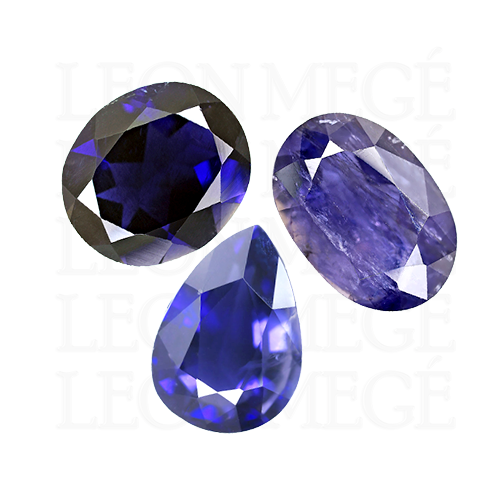
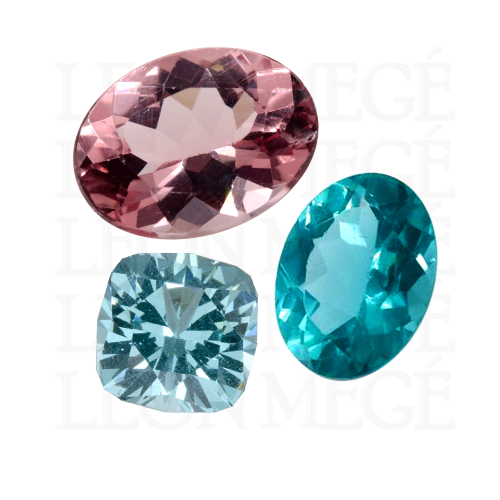
Apatite
Apatite is a gemstone on the fringes of the jewelry world because of its softness. It is rarely found in sizes larger than one carat and is mostly unknown to the general public. Apatite comes from Brazil, Mexico, and Madagascar. Fine gem apatites with a “neon” blue-green color or vivid-purple specimens from Maine are prized for their rich hues and are called “Fool’s Paraiba.”
Jeremejevite
The gemstone was discovered in 1883 on Mt. Soktui in Siberia by Russian geologist and Romanov’s tutor Pavel Jeremejev. Currently, Jeremejevite is the rarest gem coming from Namibia. Although found in many places, the specimens from Namibia come in pretty Paraiba-like light blue hues. The gemstone does not have cleavage and is pretty durable; its hardness is 6.5 – 7.5 on the Mohs scale.
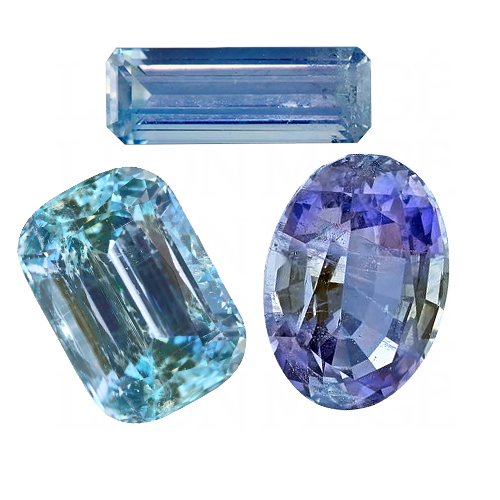
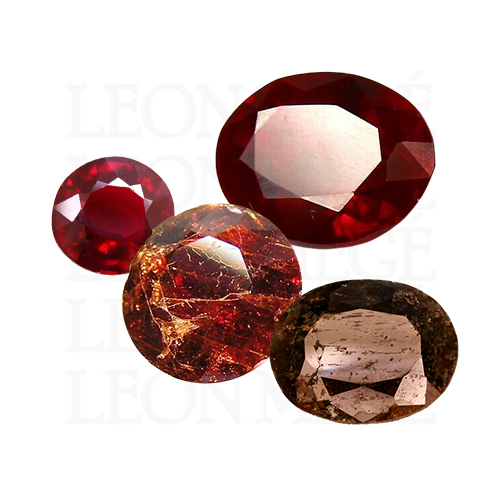
Painite
Painite is a deep-red or brownish-red stone found in Mynamar in the 1950s. Until 2001, only three painite crystals were known to exist. For decades the political difficulties in Myanmar prevented exploration and mining. Since then, additional discoveries have produced more specimens, but the gem-quality material remains extremely rare, exceeding the per carat of the finest Burmese rubies. Painite has a hardness of 8 on the Mohs scale, excellent brilliance, and attractive red color. It is typically heavily included and fractured. As a result, most Painites are cut small and shallow, which reduces their brilliance.
Taaffeite
Taaffeite is a rare gemstone resembling spinel in various shades of pink and purple, like lilac, violet, mauve, red, brown, gray, green, and colorless. Edward Taaffe discovered taaffeite in 1945 in a box of spinels. Only a handful of taaffeite gems have been found, mostly in Sri Lanka and Tanzania. Taaffeite was long mistaken for spinel, which is very similar, but taaffeite’s birefringence sets them apart.
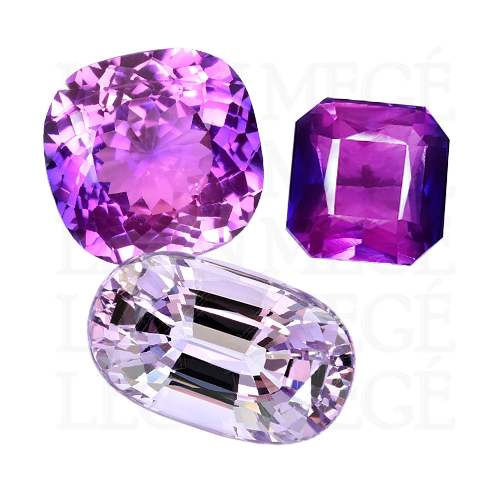
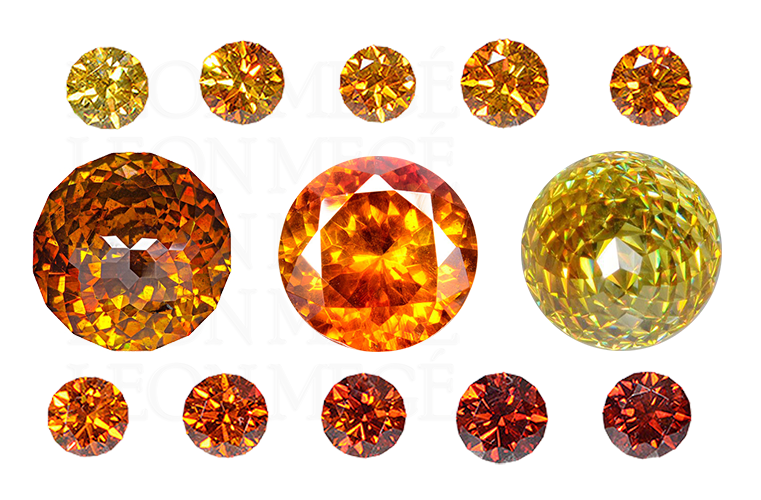
Sphalerite
Sphalerite is named after the Greek word sphaleros – deceiving or treacherous because of its multiple appearances and difficulties in identifying the mineral. In the past, miners called it zinc blende, blackjack, steel jack, and rosin jack.
Danburite
Danburite was discovered by Charles Upham Shephard (1804-1866), an eminent American mineralogist who was a professor of natural history at Amherst College for many years. Shepard began his career as an assistant to Benjamin Silliman at Yale University. Danburite is usually colorless to very light pink, but some deposits may produce specimens in shades of light yellow or brown. Danburite is known for its excellent transparency and clarity.
By chemical composition, danburite is a calcium aluminum borate silicate. It is quite hard, with a rating of 7 to 7.5 on the Mohs scale. Since it has a reasonably high refractive index (6.30 to 6.36), in the same range as tourmaline, the material can be faceted with good results. Danburite has very little cleavage, so cutting the gem is not a problem for an experienced lapidary. Danburite’s density is 2.97 to 3.03, about the same as jadeite.
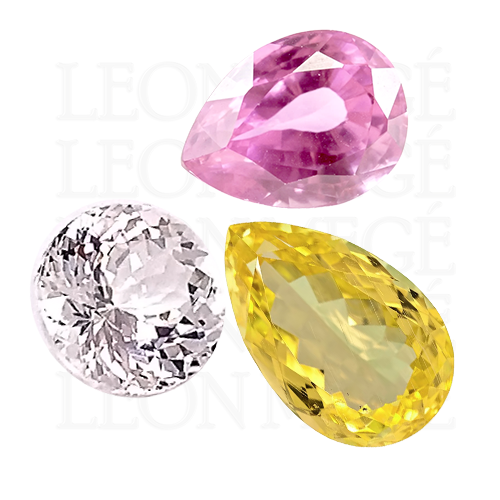
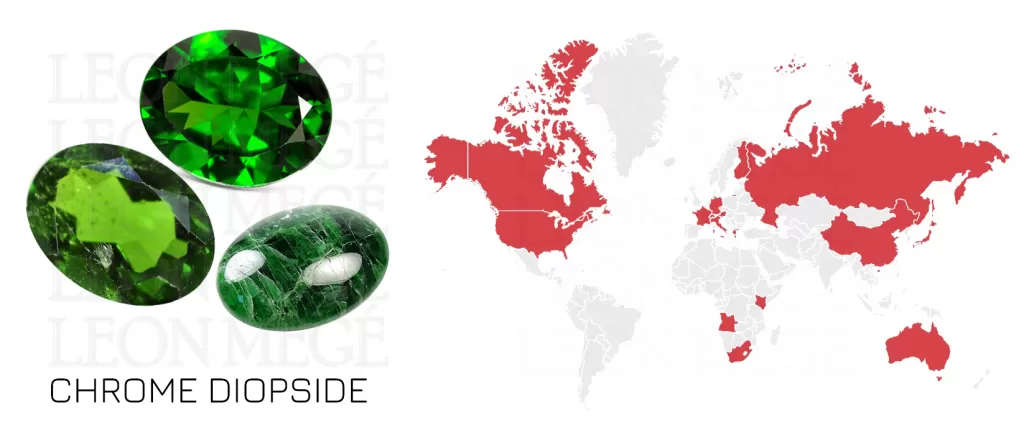
Chrome diopside
Chrome diopside is a soft gemstone with pristine clarity and an intense glow of rich green color. Yet, despite its undeniable beauty, it is cheap because there is a lot of it, and it is very soft.

